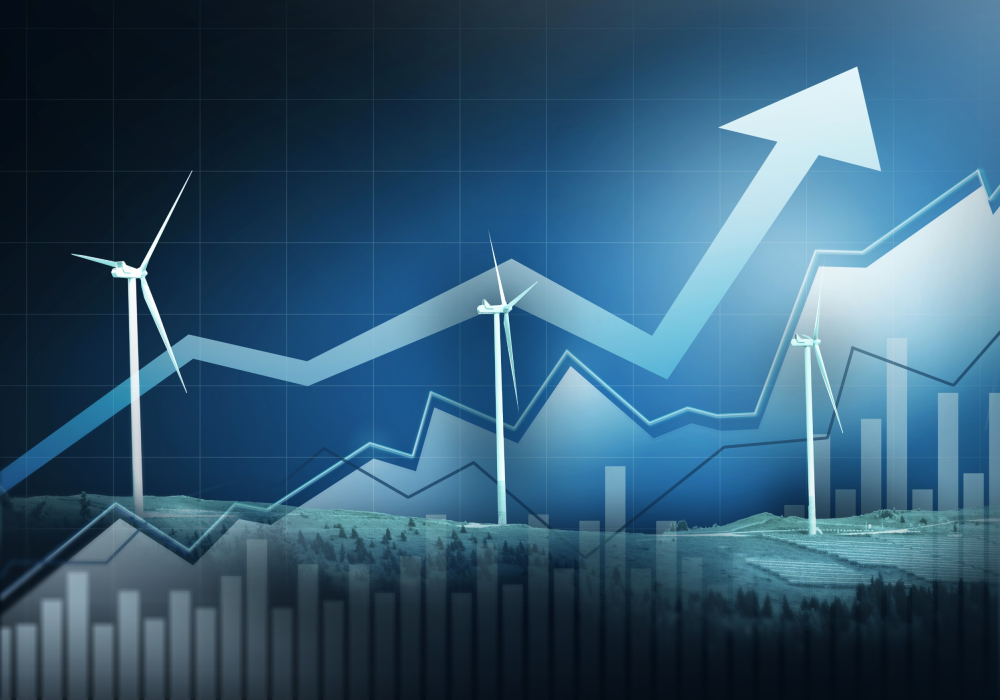Introduction: A Global Shift Toward Green Energy
The world is in the midst of a transformative energy revolution. As concerns about climate change grow, governments, businesses, and individuals are increasingly turning to green energy as the cornerstone of a more sustainable and environmentally responsible future. From solar and wind to hydropower and biomass, the global energy landscape is shifting toward cleaner, renewable sources, aiming to reduce reliance on fossil fuels that contribute to global warming and environmental degradation.
In recent years, the investment in green energy solutions has escalated dramatically. Governments around the world are implementing policies to support the transition to renewable energy, while companies are recognizing both the environmental and economic benefits of clean energy. The growing focus on sustainability has created a robust ecosystem for green technologies, fostering innovation, job creation, and global partnerships.
This article explores the increasing investment by companies and governments in green energy, examines the drivers behind this investment, and looks at the impacts of this shift on the energy sector, economy, and environment.
1. The Global Push for Green Energy: An Overview
1.1 The Urgency of Climate Change Mitigation
The most pressing reason for the global push toward green energy is the escalating crisis of climate change. Carbon emissions, primarily from the burning of fossil fuels, are a major contributor to global warming. According to the Intergovernmental Panel on Climate Change (IPCC), to prevent global temperatures from rising more than 1.5°C above pre-industrial levels, net-zero emissions must be achieved by 2050.
To meet these ambitious targets, the energy sector must undergo a massive overhaul. This involves reducing reliance on coal, oil, and natural gas and significantly increasing the use of renewable energy sources, which emit little to no carbon dioxide (CO2) during production. Governments, companies, and research institutions are investing heavily in green energy solutions to meet climate targets, create new jobs, and reduce environmental impacts.
1.2 The Role of Green Energy in a Sustainable Future
Green energy refers to energy sources that are renewable, sustainable, and have minimal environmental impact. Unlike fossil fuels, green energy sources are replenished naturally and contribute far less to pollution and greenhouse gas emissions. Key sources of green energy include:
- Solar power: Capturing the energy of the sun through photovoltaic panels or solar thermal systems.
- Wind power: Harnessing the kinetic energy of wind through turbines to generate electricity.
- Hydropower: Using the energy of moving water, typically through dams or tidal systems.
- Geothermal energy: Leveraging the heat from the Earth’s core to generate electricity or provide direct heating.
- Biomass: Converting organic materials into energy, such as biofuels or biogas.
The potential for these renewable energy sources to reduce carbon emissions, create jobs, and foster economic development makes them central to the transition toward a sustainable future.
2. The Role of Government Investment in Green Energy
2.1 Policy Support and Financial Incentives
Governments have an essential role in driving the adoption of green energy. Through targeted policies, regulations, and financial incentives, governments can stimulate innovation and increase the adoption of renewable energy technologies. Several key strategies include:
- Subsidies and Tax Incentives: Many governments offer subsidies, tax credits, and other financial incentives to companies and individuals who invest in renewable energy systems. For instance, in the United States, the Investment Tax Credit (ITC) provides tax breaks for installing solar power systems.
- Research and Development Funding: Governments are investing in research and development (R&D) to improve the efficiency and affordability of renewable energy technologies. Public-private partnerships often accelerate the commercialization of green technologies, driving their adoption at scale.
- Carbon Pricing and Emissions Trading: Governments are using economic mechanisms such as carbon taxes or cap-and-trade systems to create incentives for companies to reduce their emissions. By putting a price on carbon, governments make it more costly for businesses to continue using fossil fuels, encouraging them to switch to cleaner energy sources.
- Renewable Energy Mandates: Some countries have introduced renewable energy portfolio standards (RPS), which mandate that a certain percentage of energy produced must come from renewable sources. These policies provide a clear regulatory framework that drives both investment and innovation in the green energy sector.

2.2 International Collaboration and Agreements
The global nature of climate change calls for international cooperation. The Paris Agreement (2015) is a landmark global climate accord that aims to limit global temperature rise to below 2°C and pursue efforts to limit it to 1.5°C. Countries that signed the agreement have pledged to reduce greenhouse gas emissions and invest in renewable energy to meet their climate targets.
Through international collaboration, governments can share best practices, fund joint research initiatives, and create global markets for green energy technologies. International organizations such as the International Renewable Energy Agency (IRENA) and the World Bank are also working to facilitate the transition to clean energy by providing funding and technical expertise to developing countries.
2.3 Green Energy Infrastructure Investments
Governments are also investing in the necessary infrastructure to support the widespread adoption of renewable energy. This includes expanding electricity grids to integrate decentralized renewable sources such as solar and wind, investing in energy storage technologies to handle intermittent generation, and developing electric vehicle (EV) charging networks.
For example, the European Union’s Green Deal is a comprehensive plan to make Europe the first climate-neutral continent by 2050. This ambitious initiative involves significant investments in clean energy infrastructure, such as renewable energy projects, green hydrogen, and electric transportation systems.
3. The Role of Corporate Investment in Green Energy
3.1 The Business Case for Green Energy
For businesses, the shift to green energy is not just about environmental responsibility; it’s also about long-term profitability. Sustainability has become a core business value for many companies, and investing in green energy has tangible financial benefits, including:
- Cost Savings: Renewable energy can lower operational costs in the long term. For example, companies that install solar panels can reduce their energy bills by generating their own electricity.
- Reputation and Brand Value: In a world increasingly concerned with climate change, companies that prioritize green energy and sustainability gain a competitive advantage. Consumers, particularly younger generations, are more likely to support brands that align with their values, including environmental stewardship.
- Energy Security: By investing in renewable energy, companies can reduce their dependence on fossil fuels and global energy markets. This ensures greater energy security and protection from price volatility and supply disruptions.
- Regulatory Compliance: As governments introduce stricter environmental regulations, companies that invest in green energy technologies are better positioned to comply with evolving laws and avoid penalties. Additionally, proactive investment in clean energy can help companies stay ahead of market trends and future-proof their operations.
3.2 Corporate Leadership in Green Energy Innovation
Many tech companies and energy giants are leading the charge in developing and deploying innovative green energy solutions. Major companies are making significant strides toward sustainability by investing in green technologies such as solar farms, wind turbines, and energy storage systems. Some notable examples include:
- Google: In 2007, Google became the first major company to offset 100% of its carbon emissions. Since then, it has continued to invest heavily in renewable energy projects, including a commitment to run its data centers and campuses entirely on renewable energy.
- Tesla: As a leader in electric vehicles, Tesla has also been at the forefront of developing solar energy systems and battery storage solutions. Tesla’s Powerwall and Powerpack products are revolutionizing energy storage, enabling homes and businesses to store renewable energy for use during non-peak hours.
- Microsoft: Microsoft has set an ambitious goal to become carbon negative by 2030. The company is investing in green energy solutions, including wind and solar power, and is also focusing on carbon removal technologies like direct air capture (DAC).
3.3 Green Investment Funds and Initiatives
Beyond individual corporate investments, a growing number of green investment funds and sustainable finance initiatives are emerging to help finance the global transition to clean energy. These funds channel capital into projects and companies that are committed to reducing their environmental impact, including investments in renewable energy infrastructure, clean technology startups, and sustainable agriculture.
For example, the Green Climate Fund (GCF), created under the United Nations Framework Convention on Climate Change (UNFCCC), provides financial support to developing countries to help them transition to low-emission and climate-resilient development. Similarly, Environmental, Social, and Governance (ESG) investing is growing in popularity, as more investors are looking to put their money into companies that prioritize sustainability.
4. Challenges to Scaling Green Energy Investment
While the growth of green energy investment is promising, there are still several challenges that must be overcome to achieve widespread adoption:
- Upfront Costs: While renewable energy technologies often result in long-term savings, the initial investment required to install solar panels, wind turbines, and other infrastructure can be prohibitive, particularly for small businesses and developing countries.
- Grid Integration: As renewable energy sources like solar and wind are intermittent, integrating them into existing energy grids requires significant investment in grid infrastructure and energy storage solutions to ensure reliability.
- Political and Regulatory Barriers: In some regions, policy instability, lack of regulatory clarity, or subsidies for fossil fuels hinder the transition to green energy. Governments need to create stable, long-term policies that support the growth of renewable energy.
Conclusion: A Sustainable Future Powered by Green Energy
The transition to green energy is not just a matter of environmental urgency but also an economic opportunity. With increasing investments from governments, corporations, and financial institutions, the global shift toward renewable energy is gaining momentum. The growing adoption of solar, wind, hydropower, and other green technologies promises a sustainable, low-carbon future that benefits both people and the planet.
However, to achieve the ambitious climate goals set by the international community, continued innovation, collaboration, and investment in green energy solutions are essential. Only through concerted efforts from all sectors of society can we hope to reduce emissions, mitigate the effects of climate change, and create a resilient, sustainable energy future for generations to come.












































